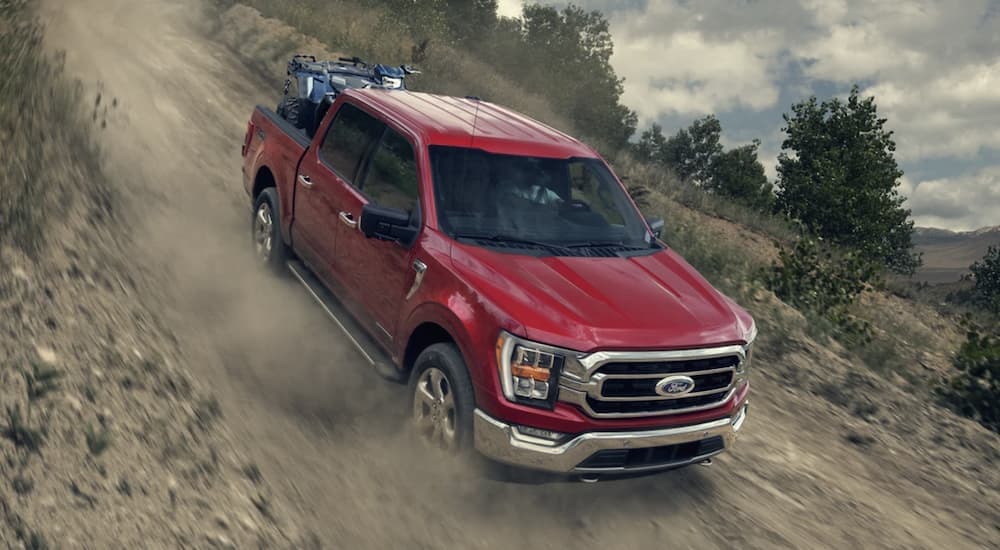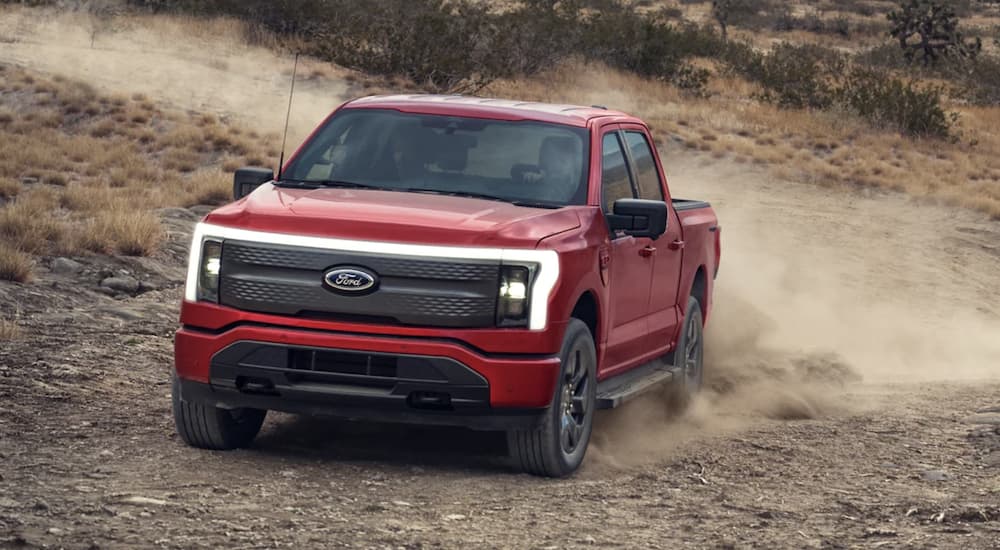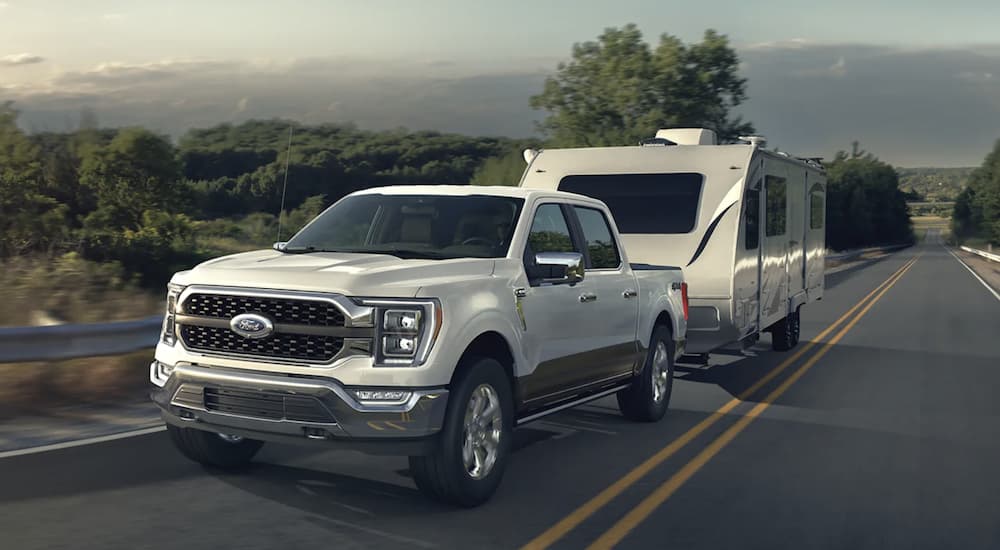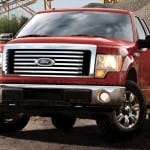The auto industry can be a mercurial creature: one moment, station wagons and minivans are the ultimate family vehicles, and the next thing you know, everyone has an SUV instead. Throughout more than a century of automotive growth, evolution, and changes, one thing that’s remained a constant is the need for trucks by a relatively large segment of the population. Well before what we’d see as modern pickups, there were early Ford and Chevy models sold as truck platforms that owners could attach a body onto––these were sold to farmers, people in trades, and similar individuals who needed a replacement for horse-drawn platforms.
These days, trucks are just as popular as ever, and models like the 2023 Ford F-150 continue as part of a legacy that goes back more than 100 years. With so much attention in the auto industry being placed on the rise of battery-electric vehicles (BEVs) rather than models with an internal combustion engine (ICE), I can’t help but wonder how things will play out with regard to pickups. We’ve already seen innovations and new models being unveiled that are starting the shift toward BEV domination with trucks, but it’s hard to say whether we’re witnessing the twilight of the ICE pickup or whether they’ll linger for a while.
Signs of the Shift Toward BEV Trucks
In order to try to answer this question, it’s important to look at indications that might give us a clear answer based on facts and not just my own assumptions or speculation. To me, the biggest and clearest sign that there’s a potential shift in the auto industry toward BEV trucks––marking the twilight of the gas-powered pickup––is just how many of these models we’re seeing. There’s no denying the impact that Tesla made with the reveal of the Cybertruck and how the other traditional car companies reacted to that.
Just off the top of my head, I can easily point to the Cybertruck, Ford F-150 Lightning, and upcoming Chevy Silverado EV as clear examples of BEV trucks that are setting the course for the auto industry. These aren’t concept vehicles or models that are years out––the F-150 Lightning is part of the 2023 model year lineup for Ford, while the Silverado EV should hit the road next year for 2024. That’s in addition to other things like Rivian’s BEV pickup and the likely appearance of a GMC Sierra EV in the not-too-distant future.
It’s not just that these models exist that makes them so compelling; it’s also the specs on them since performance and capability are as important as anything else. One of the reasons EV models failed to attract more people a couple of decades ago is due to their limited range and overall lack of power; that’s not the case with the modern range of BEV trucks. Let’s compare the conventional 2023 F-150 against the Ford F-150 Lightning.
2023 Ford F-150
- Standard Engine: 290 hp and 265 lb-ft of Torque
- Available Engine: 430 hp and 570 lb-ft of Torque
- Maximum Towing: 14,000 lbs
- Maximum Payload: 3,325 lbs
- 4WD Fuel Economy: 23/23 MPG City/Highway
2023 Ford F-150 Lightning
- Standard Engine: 452 hp and 775 lb-ft of Torque
- Available Engine: 580 hp and 775 lb-ft of Torque
- Maximum Towing: 10,000 lbs
- Maximum Payload: 2,000 lbs
- AWD Max Range: 320 Miles
There are a few key differences, but I can’t help but notice the disparity in the kind of performance these engines deliver. The starting engine in the Lightning blows away everything the standard ICE F-150 brings to the table––even the most powerful gas engine falls short. There’s no denying that this makes the F-150 Lightning incredibly fun to drive, particularly with all of that instant torque. Feeling a full-size truck take off like a sports car is something that you just can’t mimic with a gas engine.
In addition to this, even with its available hybrid engine, the fuel economy of the conventional F-150 won’t surpass the maximum range of the all-electric model. As charging technology has improved, and you can easily get the Lightning up to a full charge at home overnight, it’s hard to argue with these specs. The convenience of never stopping for gas during your daily routine, even for weeks at a time, is a fantastic option. This doesn’t work for everyone’s home setup, of course, and that’s one weakness that BEV models have.
Indications That ICE Trucks Will Continue to Thrive
Looking at those specs we just saw, there are also some big indications that ICE pickups could be with us for a long time to come. In particular, the differences in maximum towing and payload are substantial, even with all of the work Ford’s engineers have done to make the Lightning as capable as possible. The Lightning’s 10,000 lbs of towing is excellent but falls incredibly short of the 14,000 lbs that the F-150 can handle––that’s not even considering truck owners and businesses that need more power and rely on the Super Duty models like the F-350.
We see a similar difference with payload, where the maximum for the conventional gas-powered truck is more than 50% greater than the best the F-150 Lightning can handle. These are numbers that really matter to a lot of truck owners; for many, half the point of having a truck is being able to haul a trailer, camper, boat, or other things behind it. That 40% greater towing for the conventional gas engine is enough to make a difference, and until Ford’s engineers––and those at other brands––can overcome that deficit, we won’t see ICE pickups completely die out.
Looking at the Chevy Silverado EV, it similarly tops out at 10,000 lbs of towing, so it’s a safe bet that this was an internal goal at these companies meant to ensure they had enough power for a lot of drivers. While the range of the F-150 Lightning is certainly impressive, many people are comfortable with a routine that includes stopping for gas once every week or so––we all know what to expect with that. The need to charge a truck, especially if you can’t easily do so at home, creates an unknown factor that not everyone is willing to embrace.
What Will Be the Decider?
From what I’ve seen and from talking with friends and family who own and rely on trucks, the major factors on when a BEV model will become more attractive than a conventional pickup is the towing and how it will affect maximum range. Those 4,000 lbs of difference will be enough for many people to hold off on a BEV truck for a while––even if they don’t need it, it’s enough to call into question the towing power of something like the F-150 Lightning. But even more important than that is the lingering question about how real-world towing and conditions will impact the actual range of these trucks.
Right now, it’s great for Ford to talk about the Lightning having 320 miles of maximum range, but we all know that’s in optimal conditions––just like fuel efficiency for ICE vehicles. The question becomes, “What will the range look like on actual roads and while towing 5,000 lbs or more of weight behind it?” That’s something we won’t really know until all of these trucks start coming out, and people can test them in conditions that aren’t ideal and with a lot of weight behind them. Towing already negatively impacts the fuel economy of a truck, so it will certainly reduce the maximum range of an electric model.
I do think that at some point, gas-powered vehicles––including trucks––will be a relic of the past and only found in museums and special collections. Right now, that feels a long way off since there are plenty of issues that need to be ironed out (most of them are being worked on). As more of these vehicles are improved upon and built, with greater capability and a better understanding of range while towing, people will become more comfortable with them. Ultimately, these kinds of changes simply take time; I’m not sure the sun is setting on ICE pickups just yet, but it’s a safe bet that we’re well-past noon.






